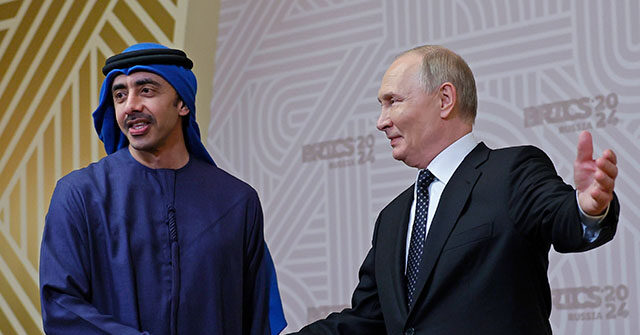The BRICS annual summit commenced on Tuesday in Kazan, Russia, attracting significant attention from member countries and other nations seeking membership. The bloc, which originally includes Brazil, Russia, India, China, and South Africa, has expanded to include new members Egypt, Ethiopia, the UAE, and Iran, while Argentina declined an invitation and Saudi Arabia’s participation remains unofficial. The summit features a dual format with bilateral meetings for member states and a larger gathering including invited guests, aimed at fostering cooperation among nations disillusioned by American dominance in global affairs.
A significant aspect of this year’s gathering is the eight new countries invited, emphasizing the bloc’s aim to serve as a counterweight to Western influence. Among these guests is Turkish President Recep Tayyip Erdogan, marking the first time a leader from a NATO country has attended a BRICS summit. The primary agenda includes discussions on expanding BRICS membership and creating an independent financial system that reduces reliance on the U.S. dollar, especially in light of Western sanctions affecting major member countries like Russia. The call for a sanctions-free alternative to the SWIFT payment system has gained urgency since Russia’s ban from it due to its ongoing conflict in Ukraine.
The summit is structured into two distinct parts, emphasizing multilateral cooperation and a united stance among Global South nations against the dominant Western frameworks. Participants will explore the establishment of a BRICS digital payment platform and strategies to enhance trade using national currencies as a means to lessen economic dependence on Western financial systems. Russia’s President Vladimir Putin has orchestrated numerous bilateral meetings with various leaders, reinforcing Russia’s pivotal role in BRICS and its ambitions to foster a collective identity among member states.
Chinese President Xi Jinping’s goals align with economic collaboration and developing alternatives to existing international financial institutions, particularly the World Bank and IMF. The New Development Bank (NDB), BRICS’ financial institution, seeks to increase its viability by encouraging trade in local currencies, though it remains limited in scope and influence. Meanwhile, Iranian representatives focus their efforts on politicizing regional tensions, particularly against Israel, showcasing a divergence in priorities among BRICS members that underscores the coalition’s complexity.
The widespread anti-American sentiment among BRICS countries, particularly prominent in statements from Iranian officials and aligned sentiments from Russia, reflects a shared desire to challenge U.S. hegemony. Pezeshkian, an Iranian delegate, articulated the summit’s potential to offer a counter-narrative to U.S. foreign policy while calling for greater collaboration on energy, industry, and tourism. Putin, too, acknowledged the adverse effects of sanctions imposed by the U.S. on Russia and hinted at a broader rethinking of the dollar’s global status, framing it as a crucial consideration for the future of international trade.
Overall, the BRICS summit represents a pivotal moment for the coalition as it seeks to redefine its role on the global stage, moving towards a more multipolar world. By prioritizing a reduction in U.S. influence and fostering economic alternatives, BRICS aims to amplify the voices of the Global South in international relations. This gathering highlights both the potential for greater cooperation among nations looking for new economic pathways and the intrinsic tensions that arise within a diverse coalition of countries with divergent priorities and strategic interests.

